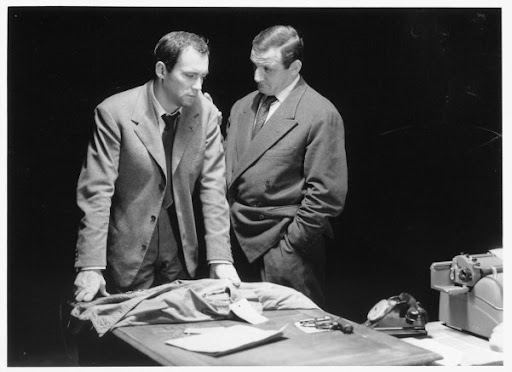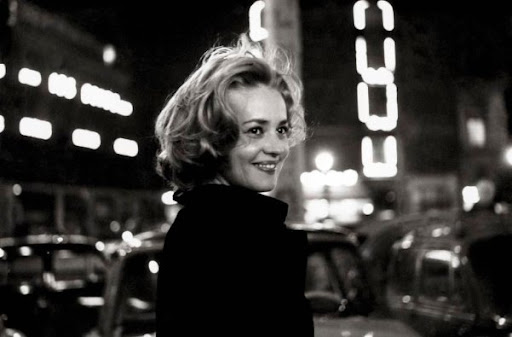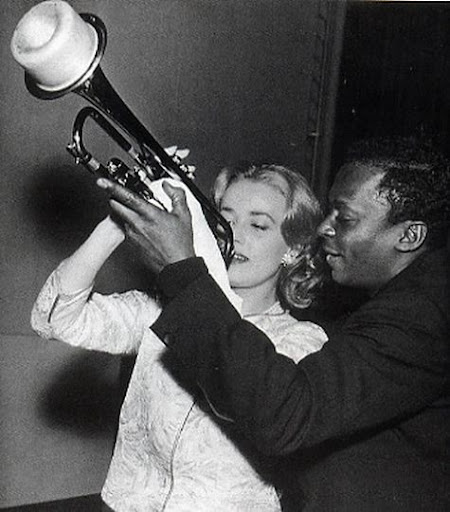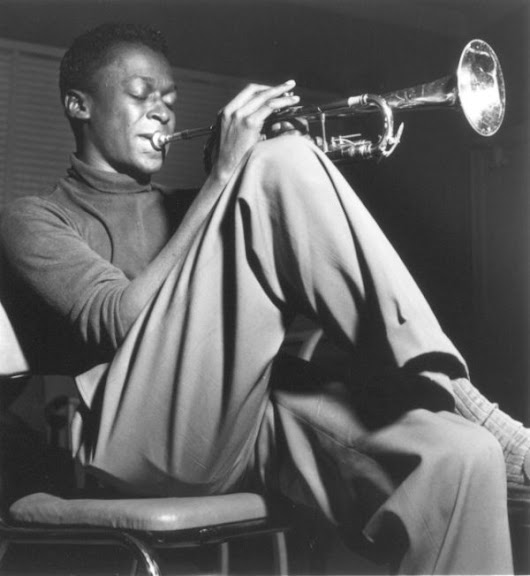
Okay, okay. I'll cool it with the Miles Davis posts...for now. But first, here's the Ascenseur pour l'échafaud soundtrack in lossless for your listening pleasure.

From Thomas Jarvis at Sound on Sight:
It’s past midnight in the dark Le Poste Parisie recording studio. Miles Davis steps up to the microphone, his face illuminated by the flickering cinema screen in front of him. He sees Jeanne Moreau walking slowly along the Champ-Elysses on a stormy night, her face lit only by the lights glowing inside the cafes, bars and late night amusement arcades. Drawing breath, the first notes to emerge from Davis’ muted trumpet are sombre; a simple aching blues riff, that echoes the heartbreak and desperation of Moreau, as she searches for her lost lover.
Louis Malle’s first feature, Elevator to the Gallows (Ascenseur pour l’échafaud), was based on a pulp novel by Noël Calef, which he had picked up in a train station, and later adapted with Roger Nimier.
The narrative follows ex-paratrooper Julien Tavernier (Maurice Ronet) and his lover Florence Carala (Jeanne Moreau), whom devise a plan to murder her husband, an arms dealer, who also happens to be Julien’s boss. Having killed him, Julien gets trapped in the elevator and fails to arrive at their agreed rendezvous. A distraught Florence wanders the streets of Paris in search of Julien, afraid he has not carried out the plan and has abandoned her. Meanwhile, two teenagers steal Julien’s car and arrive at a new Motel on the outskirts of Paris, where they commit a double murder and inadvertently leave evidence behind that implicates him.
Malle, a fan of American film noir and Hitchcock, shot the film using the acclaimed cinematographer Henri Decaë. To update the traditional image of Paris and create a contemporary thriller, he incorporated office blocks, motels, and new highways into the backdrop. In a final touch of modernity, he disregarded the use of a conventional musical score, and used the cool, underground music of the day: jazz.

By the end of 1957, Miles Davis was moving away from the sound that he had created with Birth of the Cool. Influenced by George Russell’s theories on ‘modal’ music, he was looking to create music that stripped away the use of chord changes as the harmonic structure.
Without a solid band and these new musical concepts fermenting, Davis accepted an invitation from Marcel Romano to play at the Club Saint-Germain in Paris. Romano put together a group of musicians for him, consisting of René Urtreger (piano), Barney Wilen (saxophone), Pierre Michelot (bass) and the legendary Kenny Clarke (drums), an influential figure in the creation of Be-bop, playing alongside Charlie Parker and Dizzy Gillespie.
Arriving in Paris, Davis found a culture open to jazz, where jukeboxes in bars and cafes had the latest be-bop records, and hip young kids were reading Faulkner and watching the movies of Nicholas Ray. Davis was introduced to Malle by the singer Juliette Greco, and agreed to record the score for Elevator To the Gallows, then in post-production. Malle, who was a knowledgeable fan of jazz music, asked Davis if he would improvise the music, and showed him just a few fragments of the first rough cut of the film. Davis quickly sketched down some basic ideas and musical themes, and that was it, until the day of the session.
On the night of the recording, December 4th, 1957, each member of the band set up in front of a cinema screen on to which the film was projected. Davis showed the musicians the basic themes he had written, over which he would improvise, and with Malle, they quickly identified the scenes requiring music. Finally, the studio engineers let the opening credits roll and the band began to play.

As the camera pulls away from Julien stood at his office window, speaking to Florence on the phone, we hear Davis’ trumpet play a simple blues melody that will overshadow the tragic lovers’ story. In keeping with his ideas on modal music, the chords are spare, minor key, and the bass line a simple looping motif. Later in the film, as Florence stalks the night searching for Julien, she is seen muttering, almost mouthing the notes of Davis’ trumpet melody to herself. The trumpet follows and speaks for her, when all she can do is shake her head in the rain and mournfully roll her eyes.
In some of these scenes, Davis asked Urtreger not to play piano. He wanted the music to be more abstract and airy, detached from chord sequences. Urtreger described it as ‘a painter taking out the lines’. This abstraction gave his playing an almost human voice; when Florence enters a busy local café, a dialogue emerges between Davis’ chattering trumpet and the rarely heard saxophone of Wilen, that mimics the murmur of the after hours conversation.
In the last third of the film, Davis’ trumpet disappears and the only music used is Clarke’s sizzling hi-hats and Michelot’s bubbling bass, as two detectives interrogate Julien in a shadowy room. Malle leaves the trumpet out until the final scene, when Florence turns up at the Motel dark room just as photos of her and Julien are developing in the water. The detective explains that she is charged as an accomplice to her husband’s murder, and Davis repeats the blues theme from the opening credits, thus bookending the film, in which we never actually see the two lovers together save for in photographs.

The recording of the score was started and completed on the same night, and although Miles Davis’ music is only in the film for twenty minutes, its mood remains with the viewer throughout. Malle’s sparing use of the music echoes Davis’ sympathetic use of space in his playing; Malle doesn’t fill each scene with music, but leaves many sequences silent and brings the music in later on, to add layers of suspense or emotional impact.
After Elevator to the Gallows was released, Malle and Moreau both became ‘stars’ and the film helped pave the way for the Nouvelle Vague. Louis Malle remained humble enough to state that “without Davis I don’t think the film would be as good.”
Miles Davis returned to New York and formed a new band featuring John Coltrane and Cannonball Adderley. With them, he recorded the albums Milestones and Kind of Blue, the latter perhaps the most well know and influential jazz record of all time. He used his new techniques derived from the ‘modal’ system – basic sketches, minimal chord progressions, simple melodic themes, and improvisation – all ideas that first bore fruition on the Elevator to the Gallows score.

Technical Information:
Artist: Miles Davis
Album: Ascenseur pour l'échafaud/Elevator to the Gallows OST
Year: 1958
Audio Codec(s): APE/FLAC8
Encoding: lossless
Rip: EAC APE + .cue/FLAC8 split tracks
Avg. bitrate: 517 kb/s
Sample rate: 44100 Hz
Bits per sample: 16
Channels: 2
File size: 98.7 MB/132 MB
Length: 0:26:22

Personnel:
Miles Davis: trumpet
Barney Wilen: tenor saxophone
Rene Urtreger: piano
Pierre Michelot: bass
Kenny Clarke: drums
Tracklisting:
01. Generique (2:52)
02. L'assassinat de Carala (2:12)
03. Sur l'autoroute (2:21)
04. Julien dans l'ascenseur (2:13)
05. Florence sur les Champs-Elysees (2:53)
06. Diner au Motel (3:59)
07. Evasion de Julien (0:55)
08. Visite du vigile (2:05)
09. Au bar du petit bac (2:55)
10. Chez le photographe du Motel (3:56)

Elevator to the Gallows OST Megaupload Links:
APE + .cue
FLAC8 split tracks


